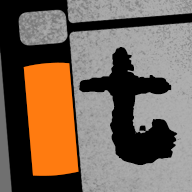There's some good advice here, such as: The more you ask actors to do or think about during filming, the less likely you are to get a good/convincing performance out of them and, always avoid ADR where possible. Of course in practice you can't always avoid ADR and as budgets get bigger it often becomes more difficult to avoid ADR. I was once on a set in Pinewood Studios where they were filming a green screen scene of the main characters in a storm. To create the wind and horizontal rain they used two huge fans and a small jet engine!! The director had to call "Action" with hand signals because you couldn't even hear him scream "Action"! There was no point even trying to record guide dialogue and after watching the first take the production sound mixer suggested we go and get some breakfast!
I mean the biggest example would be how in the video, a character is laughing with her mouth open, but in the audio, it sounds like it's closed. Or a character breaths heavy but the breathes are longer in the video, then in the audio. But as long as the audience will buy things like that in the moment.
It's unlikely that you are going to get away with this, without distracting the audience enough to pull them out of the scene. It seems like maybe your ADR technique needs looking at because there's no point ending an ADR session unless you've got usable ADR. Maybe someone else has written this somewhere but just in case here are some ADR tips:
Preparation is one of the key elements to getting acceptable ADR. Create a detailed accurate ADR cue sheet to start with and from that move on to the laborious task of creating all the necessary loops. Make sure the loops are short, usually no more than half a dozen words at a time (often fewer) and place 3 beeps (1kHz tone, 1 frame duration) exactly 3 secs, 2 secs and 1 sec before the start of each and every ADR cue. Loop recording with bleeps will help the actor get into the rhythm of the dialogue and help them hugely to record at least one ADR take which very closely matches the mouth movements of the visuals. Usually you'll need to loop record at least 5 or 6 takes and circle the one you like best. In the case of grunts, laughs, sighs, breaths, etc., you might, depending on the skill of the actor, have to create an individual ADR cue for each individual grunt/sigh/sound. You can't move on to the next ADR cue until you have at least one take which closely matches the mouth movements. There are professional tools which can manipulate the ADR to match quite accurately the position and duration of each syllable with original production sound (which is why it's always worth trying to record production sound even if you know the scene is going to be ADR'ed). Without these tools though ADR recording is going to take much longer because you have to achieve an excellent match pretty much through recording alone. There are ways to make ADR position/duration match just through editing techniques but it's fiddly, time consuming and as often as not results in poor quality. So in the example I've quoted from you above, you just have to keep doing takes, and if necessary shortening the ADR cues to single sounds, until the actor gives you something acceptable. Lastly, file management! Make sure you name the takes as specified in the ADR cue sheets. You might end up with hundreds (or thousands on a feature) of ADR files and waste hours/days trying to find the right ones if your file management is poor.
This obviously is just the basics of the technical side of ADR, trying to get an acceptable performance from an emotional point of view is another whole subject area of ADR recording. For some excellent advice (without technical jargon) have a read of
this thread on one of the professional audio post forums.
G
 ✅ Technical and creative solutions for your film.
✅ Technical and creative solutions for your film.
